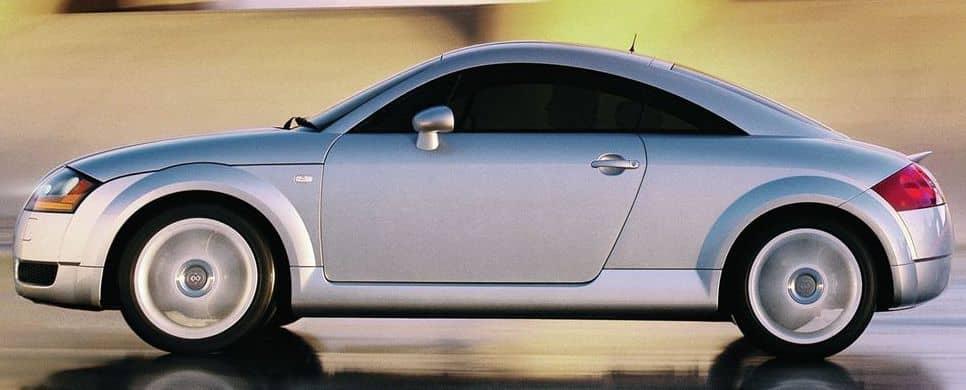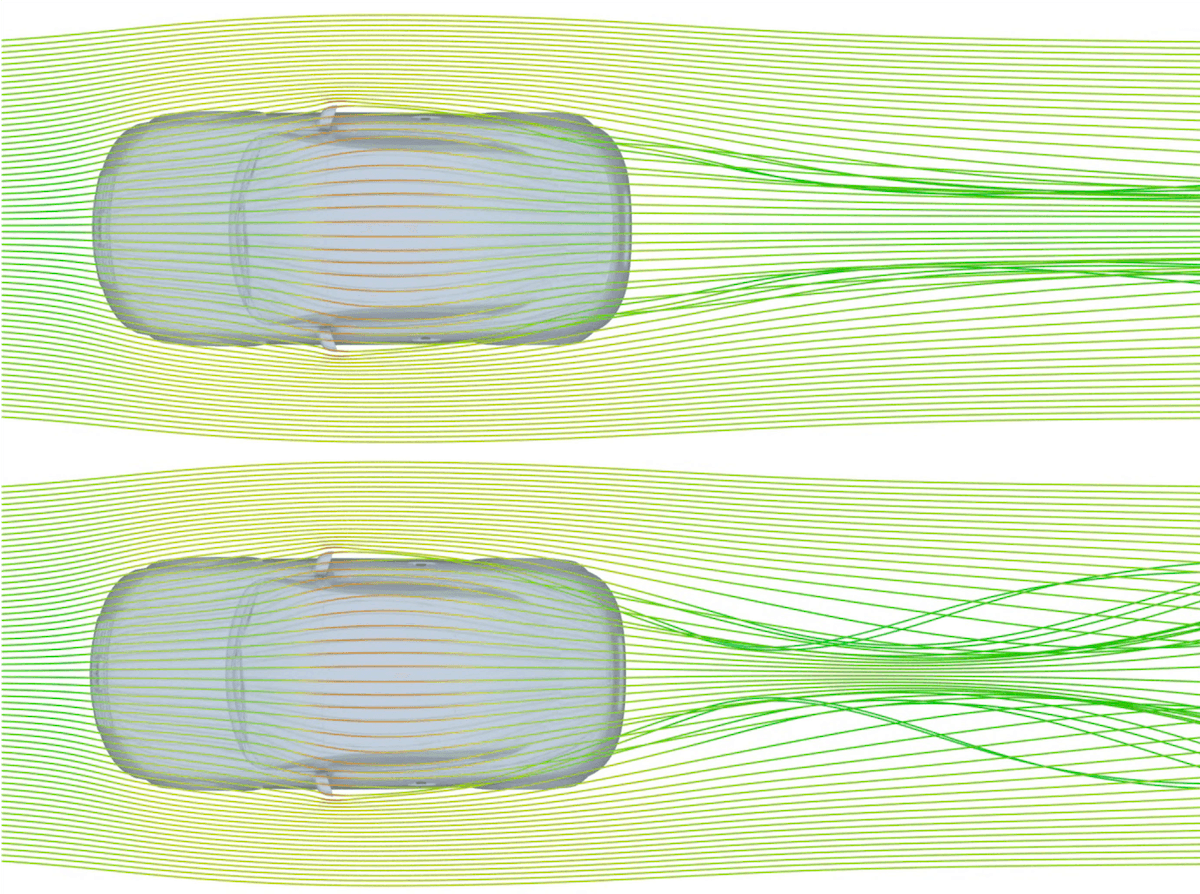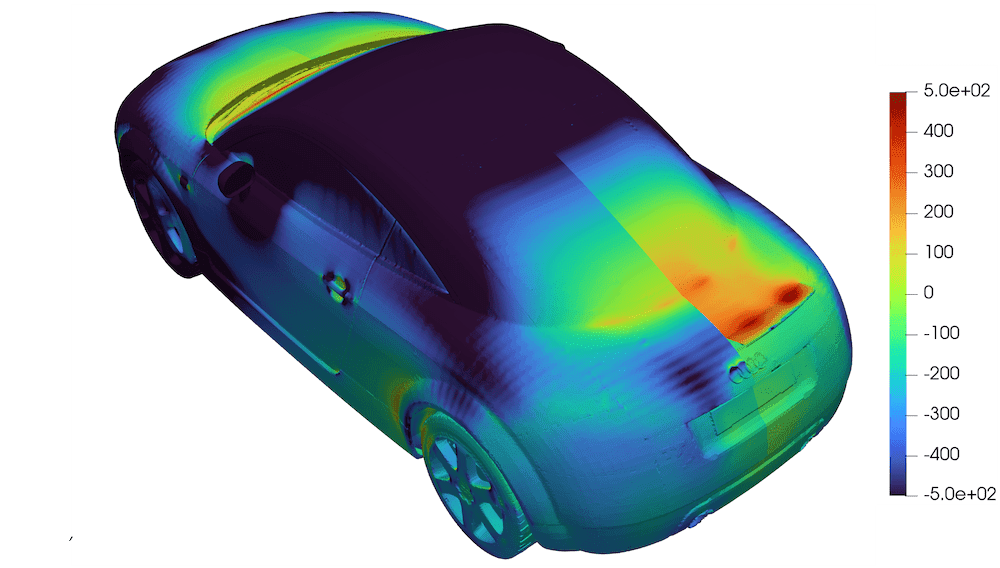The Audi TT concept was first unveiled at the 1995 Frankfurt Motor Show. This two door coupe featured four wheel drive and was powered by a 1.8 litre inline four cylinder turbocharged engine. The clean lines of the Bauhaus-inspired styling wowed the Frankfurt audience and the wider media and was deemed a revelation for the previously conservative Audi brand.
The production car sold well initially, but some high-profile incidents in Germany made it clear that the car had some problems with high-speed stability. Audi had to solve these issues fast and developed a new version which incorporated a small rear spoiler and revised suspension settings.

Modelling the Audi TT in CFD
The changes Audi made to the TT were a success and the car has now become something of a classic. But how much difference did that rear spoiler actually make to the aerodynamics and overall performance of the Audi TT? To find out, we decided to use AirShaper software to conduct an aerodynamic study which compared the original version of the Audi TT without the spoiler against a revised version with the spoiler.
This was fairly easy to do: we purchased a public 3D model of the Audi TT with a spoiler, and then created a copy without spoiler. Further detail could be added by automatically incorporating a rotating wheel simulation. This identifies the wheels from the base geometry and is a valuable tool when investigating automotive aerodynamics.
CFD results
AirShaper allows simulations to run in the cloud and produces a number of different ways to visualise the results, all of which are detailed in an automatically generated PDF report. However, one of the simplest methods to compare results is to look at key numbers. The drag and lift coefficients for both the front and rear are shown in the table below.
| Without spoiler | With spoiler | |
|---|---|---|
| Drag Coefficient, Cd | 0.305 | 0.265 |
| Total Lift Coefficient, Cl | 0.098 | -0.018 |
| Front Lift Coefficient, Cl,f | -0.063 | -0.072 |
| Rear Lift Coefficient, Cl,r | 0.161 | 0.053 |
As this is a public 3D model, don't focus on the absolute numbers, but rather on the relative differences. The most important change for the Audi TT is the reduction in rear lift coefficient from 0.161 to 0.053. This clearly indicates how a small feature like a spoiler can have a strong impact on the rear lift of the car.
Correlating results with reality
Fortunately for us, after the Audi TT had been revised, the changes were covered in various automotive magazines. Car And Driver in the US conducted a correlation study between the original Audi TT, the revised version with the spoiler and several competitors at 125mph. The rear lift values of this study are detailed in the table below.
| Original TT | Revised TT | BMW Z3 | Mercedes SLK | Porsche Boxster | |
|---|---|---|---|---|---|
| Rear Lift (Ibf) | 148 | 53 | 64 | 104 | 68 |
Although absolute values cannot be compared (due to the lack of detail on the 3D model), both simulation and test feature a comparable 65% drop in lift.
Visualising the results
The power of CFD is that it gives detailed visualisations of the results. For example, surface pressure and surface friction can be displayed as coloured maps, while velocity streamlines show how the air behaves as it flows over a vehicle. These visualisations help us to really understand the interactions between airflows and the differences between the two configurations with and without a spoiler.
Streamlines

In its original form, the Audi TT acted similar to an aircraft wing. The flow over the top surface has to speed up to meet the under-car flow at the rear of the car. As Bernoulli’s equation sets out, this higher velocity means the static pressure is lower above the car than below, otherwise known as lift. The air follows the body shape all the way to the rear bumper, creating a strong downwash to the wake.
The spoiler works by disrupting this flow and slowing it down. A pocket of recirculating air is created ahead of the spoiler. This slow-moving air means a higher static pressure, eliminating the lift. The flow also separates from the rear window much earlier, creating a recirculation behind the car and a much larger wake that no longer downwashes.

Pressure maps
The effect of this is illustrated in the pressure maps shown below. The increased pressure on the spoiler affects the surrounding areas of the car as well. Hot colours show where pressure rises on the rear window, the top of the boot and even on the areas downstream of the spoiler. Lift is decreased by the higher pressures on horizontal surfaces and drag reduced by the increases on rearward-facing areas of the car.

A simple solution to a big problem
The Audi TT demonstrates how a big problem can be solved with a relatively small solution. The spoiler added here is not a rear wing element generating downforce in its own right. It is simply a trip to interrupt the airflow, which changes the aerodynamic behaviour of the whole car. Audi made changes to the rear suspension too, but it is likely that the spoiler had the most significant effect on improving high-speed handling.
It is interesting to see how a problem like this caught out a large automotive company like Audi in 1998. Now, modern computing power and tools like AirShaper allow us to carry out analysis like this from a home PC.
